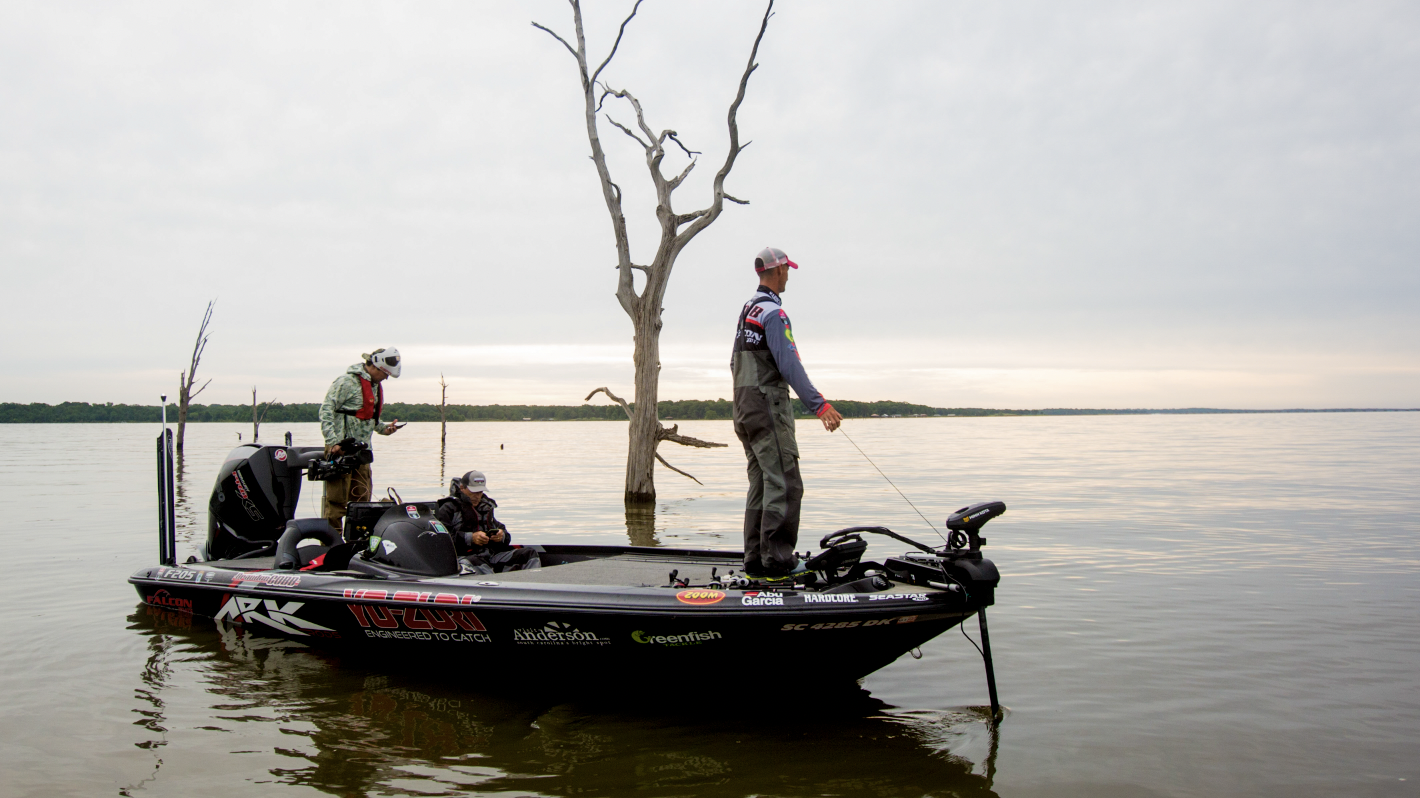
Bass fisheries bristle with countless dock posts and bridge pilings, but while the man-made stuff proves undeniably relevant, naturally vertical wood provides fish with key habitat. From prespawn staging areas to summer homes, standing timber merits close attention.
Lakes such as Dardanelle, Toledo Bend, Texoma and Table Rock sprout plenty of emergent trees — thriving cypress and tupelos or skeletal remains of oaks, pines, cedars, etc. — while the likes of Ouachita, Hartwell, Clarks Hill and Lanier present the classic submerged-forest scenarios. South Carolina’s Brandon Cobb feels comfortable in either scenario, but he’ll adjust his strategy depending on what he’s facing.
“When I’m fishing visible standing timber, I look more at the specific trees than I necessarily do at the topography,” he said. “You have to put a pattern together, and I’ve seen it change day to day. Sometimes you’re looking for cedar trees with a lot of limbs and a lot of tight cover. Other times, they seem to hold in what I call the ‘forky oaks’ — the big, meaty trees; not ones with a bunch of limbs, but big stalks.”
When Cobb’s working the submerged timber that tops out 15 to 20 feet below the surface, he’ll certainly rely on his graph to determine the thicker trees and the ones with more or less limb structure. However, in this scenario, topography — ditches, dropoffs, etc. — more significantly impacts his approach.
“Obviously, it’s hard to tell one tree when you have a forest on the graph,”
Cobb said. “In that situation, I will look for open areas with an isolated tree. During the 2019 Elite tournament on Lanier, I found what used to be fields of trees before they made the lake, and they would have one big tree in the middle — and that tree was [usually] good. There was almost open ground around it, and it worked almost like a brushpile.”
Micah Frazier, the Georgia stick who placed third in last year’s Elite tournament on Hartwell, is familiar with Lanier’s deep timber. His experience has taught him to treat timber the way he does a grassline. For him, it’s all about staying on top of the fish’s movement.
“You try to find the edges of the timber,” Frazier begins. “Before they [the U.S. Army Corps of Engineers] flooded the lake, they would clear the bank out to a certain depth and then leave the timber standing. So, that edge — it may be the inside edge or the outside edge on a channel — is where you focus.





